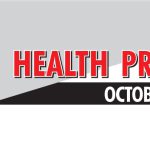1. Prediabetes is a reversible condition.
a: True – Prediabetes is a condition in which the blood sugar levels are higher than the normal range but are not high enough to be termed as Diabetes. In this, the person develops either an impaired fasting glucose (higher than normal blood sugar levels after fasting) or impaired glucose tolerance (higher than normal blood sugar levels after meal). Many people with Prediabetes eventually develop Type 2 Diabetes. Prediabetes can be reversed by bringing modification in lifestyle, bringing changes in the diet and adding exercise to your daily routine. An early diagnosis of prediabetes can prevent progression into Type 2 Diabetes.
2. Diet, exercise and medication can cure Diabetes.
b: False – At present there is no cure to Diabetes. Type 1 Diabetes is an autoimmune disease in which the beta cells are destroyed by the immune system causing blood sugar levels to rise. Type 2 Diabetes can be caused by multiple factors such as obesity, poor eating habits and sedentary lifestyle. Diabetes can only be managed with a healthy diet, regular exercise and timely medication.
3. Which of these is a symptom of Diabetes?
d: All of these – Diabetes can hamper the nervous system. High blood sugar levels affect the body’s immune response and impair blood circulation in the hands, feet even to the pores of the hair. This causes conditions like alopecia (hair loss in patches), numbness in the hands and feet and muscle cramps. People with Diabetes also experience frequent urination. This is because their body tries to eliminate excess glucose from their body; hence the feeling of thirst and frequent urination.
4. Symptoms of mild hypoglycaemia can be treated with –
c: Glucose or dextrose tablets – Glucose or dextrose tablets are pure sugar and dissolve quickly. They help raise the blood sugar levels immediately. The carbohydrate content present in these tablets is easy to count, thus helping in maintaining the carb count. Energy drinks contain caffeine and have high carbohydrate levels which can cause the sugar levels to spike and also carb count is hindered. Other foods such as chicken and fish have low carbohydrate value and are less helpful in treating hypoglycaemia.
5. Daily physical activity prevents the risk of Type 2 Diabetes because it helps –
d: All of these – Type 2 Diabetes is caused by several factors, some of which are impaired glucose tolerance, increased insulin resistance and obesity. High cholesterol and triglyceride levels can further worsen the picture. Such condition is called as diabetic dyslipidaemia. High cholesterol levels pose greater risk to heart and can lead to cardiovascular disease. Every day physical activity not only helps to better manage the factors that cause or worsen Type 2 Diabetes but also prevent associated complications such as heart attack and stroke.
6. deal foot care regime includes –
d: All of these – People with Diabetes have impaired sensation in the feet and cannot feel pain. So, taking care of the feet is essential in Diabetes. A regular foot care regime can help prevent foot infections and foot amputation. Feet should be inspected regularly for any bruises, cuts or wounds. Any wound or infection if seen should be immediately reported to a foot care specialist. Feet should be properly washed and cleaned including the spaces between the toes using a mild glycerine soap prescribed by the foot care specialist. Feet should be kept dry as moisture can attract bacteria and can cause infections. Also the type of footwear and socks used play an important role in foot health.
7. Which is the best posture for monitoring blood pressure at home?
d: Being seated with your back rested and feet on the floor – When checking blood pressure at home, sit comfortably and keep your back relaxed and comfortable. Keep your arm in a relaxed position and your palm open. Your arm should be rested below the level of your heart. Ask your healthcare provider how to correctly sit and check blood pressure at home.
8. People with Type 1 Diabetes –
a: Require insulin – People with Type 1 Diabetes have impaired insulin secretion in their body. There is no Insulin secretion in their body. They are prescribed insulin to manage their blood sugar levels. There are different types of insulin available. People with Type 1 Diabetes may either be prescribed single or a combination of different types of insulin to manage their blood.
9. When travelling you should –
c: Carry sufficient insulin supplies – Travelling can significantly affect your routine including your meal time and insulin dosage time. Also if you are travelling abroad, the difference in the time zone can affect your insulin intake. In such a scenario, pre-planned supplies of insulin can come in handy. It is recommended to carry extra supplies of insulin in a cooling pouch so that your blood sugar management is not hampered. Also it is recommended to check your blood sugar levels regularly when travelling. Consult your physician before if you are planning to travel.
10. Which of the tests require drinking a sweet drink?
c: Oral Glucose Tolerance Test – Oral Glucose Tolerance Test (OGTT) is done to check the body’s capacity to consume oral glucose which is the primary source of energy. OGTT is recommended to diagnose prediabetes and Diabetes. It is also recommended to diagnose Diabetes in pregnancy or GDM. For OGTT, blood sugar levels are measured after 8 hours of fasting and then 2 hours after taking 75 gm of glucose drink. The normal value for OGTT 2 hours after the glucose intake is > 140 mg/dL or > 7.7 mmol/L.















